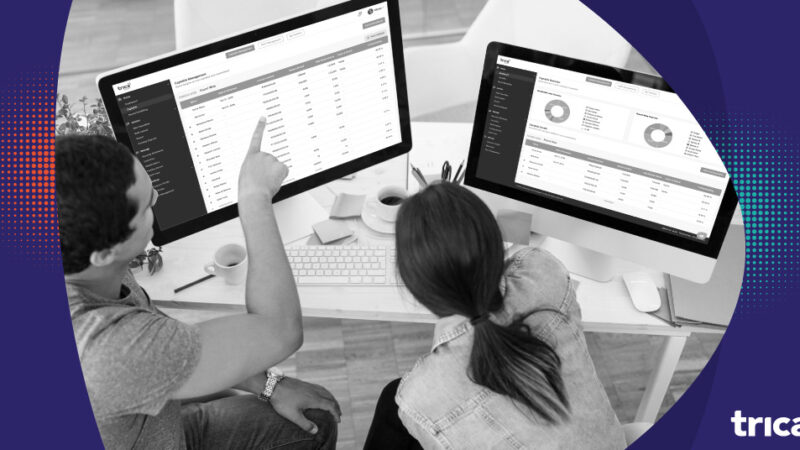
Why should Startups use a Cap Table Software – Use this Free Cap Table Template
Maintaining a functioning and up-to-date cap table is an essential part of its operations for a startup that plans for growth. In the initial stages of growth, it is relatively easy to track the equity ownership percentage in the company. However, as the startup grows, the number of stakeholders grows from five to more, and their shares aren’t easy to track. Therefore, as a startup grows, so does the complexity of its cap table. If you’re starting building a cap table, this blog will show you the right path to maintain one, with a free template for your reference. Let’s dive in.
What is a Startup Cap Table?
A startup cap table is a list of authorized shares held by founders, venture capitalists, angel investors, and any employees or advisers involved in the business plan. The various metrics are relevant to managing them include your business’s ownership structure, equity dilution, option exercise windows, and expiry dates at each round of funding for your company.
The cap table is a living document: As your startup grows and progresses through funding rounds, your cap table needs to be updated to reflect those changes. It should show the investors of each financing round and reflect each new company valuation.
Some startups start by building their cap tables via Excel or use a template as a startup cap table model. However, most companies realize later that maintaining cap tables via software like trica makes the process easier and more accurate. trica’s cap table management software also helps organize the legal documents relating to the transactions, such as stock issuances, transfers, cancellations, exercises of options, conversions of debt to equity, and more.
What details should a cap table include?
Contrary to how complex it seems, cap tables contain the same basic information as any other organizational chart. Here’s what it includes:
- Name
- Type and number of shares they own from each funding round
- Value of shares
- Equity ownership in the company
Along with the shares owned by investors and founders, startups set aside 10 to 20 percent of the total shares to attract and retain talent. The cap table also shares an overview of exercised stock options and the option pool (shares remaining for future workforce or advisors) to give a full picture of the company’s ownership.
To familiarize yourself with cap tables, here’s a glossary of must-know terms specific to startup finance to get started –
- Pre-money valuation— The company’s value before including the value added in the most recent funding round.
- Post-money valuation— The company’s value after including the value added in the most recent funding round.
- Common stocks (or common shares)— The standard stock created when your company is formed, usually the type of stock founders and employees receive.
- Preferred stocks (or preferred shares)— Most investors buy stock. Preferred stock, or preferred shares, is a lower-risk investment: If your company is liquidated or pays dividends, preferred stocks will be paid out as a priority, so investors with preferred stocks will receive their money before those with common stocks.
- Options— Stock options are the right to buy shares at a set price. An employee can choose to exercise a stock option and buy shares, reducing the number of stock options left in the pool.
- Convertible notes— A type of debt: Convertible notes exchange investment up front for the right to redeem shares when the company reaches an agreed-upon milestone. Convertible notes are common for startups to raise money in the early funding stages.
- SAFE— Simple Agreement for Future Equity. Similarly to convertible notes, SAFE exchanges investment up front for the promise of future equity. However, unlike convertible notes, SAFE doesn’t have a maturity date and doesn’t carry interest.
- Outstanding ownership (or outstanding shares)— The percentage of the company each investor or founder owns out of all the stocks that have been issued, including total common stocks and preferred stocks but not stock options that haven’t been issued yet.
- Fully diluted ownership— The percentage of the company each investor or founder owns out of all the available security types, including common stocks, preferred stocks, available stock options, and any convertible notes or SAFE.
How do startups manage their cap table, and why?
Here’s how most startups manage their cap tables:
- Excel or Spreadsheet that is updated now and then
- Cap table management software builds a cap table for you to enter information manually.
- Equity management platforms like trica update your cap tables in real-time so that your company’s worth is reflected truly.
In our conversation with startup founders, we’ve noticed that many still manage their cap tables via excel or spreadsheets. Spreadsheets are great when your startup has only two founders, and tracking the nature of ownership is pretty straightforward. You might not require a purpose-built solution to maintain your cap table at this stage.
Now two years down the lane, your startup has scaled to 35 employees. Every time a new employee joins, they need to be awarded equity, and the respective changes are to be made on the cap table. And if you’re securing back-to-back investments? Yes, you’ll have to make the changes again. Just as repetitive as it sounds, cap tables tend to get complicated at this stage. When you manually input data, you’ll have to double-check the numbers and validate them with a calculator – only to end up with mismatched numbers that do not go with the company’s legal documents. And these discrepancies usually do not come to light until you’re ready for a funding round. It requires hours of accountants’ time to find out the errors.
However, imagine if you just need to enter your data, and the cap table is created in minutes. You’ll never need to double-check or validate your figures with a calculator again. Sounds like a dream, right? That’s the potential of equity management software.
Also read: Key mistakes to avoid while managing a Cap table
What’s different in a Digitised Cap Table?
Cap table management software like trica helps startups automate cap tables by importing data from excel. All you have to do is input your data correctly into the software, and it builds a cap table from scratch. You can also list different equity types like – common, preferred, warrants, and convertible securities; factor in different vesting schedules for stock grants; terminate stock option grants; convert convertible notes and SAFEs to common shares; calculate waterfalls and what-if scenarios to model dilution in preparation for investor negotiations. Importing and exporting cap tables from the software to excel is also possible here. The best part is, that you get all the information you need without having to labor manually on an excel spreadsheet.
Your free Cap Table template
As promised, here’s your free cap table template intended for startups. This will help you with tracking ownership. As your startup scales to new levels, cap table management can get difficult when you’re doing it manually. That’s when you need to wave a flag and contact trica experts for help. We can help you find the best way to manage cap tables.
Create your Cap Table in minutes
Whether you’re a founder, investor, or CFO, there are numerous benefits to sharing uniform cap table information with all your shareholders, including lower risk, enhanced communication speed and consistency, the prevention of internal conflicts during funding events, and (most significantly) improved overall transparency and confidence.
Communication is essential to long-term success in any partnership, so we recommend that you share cap table access with your investors and employees without hesitation.
It’s simple and hassle-free to manage the equity of all shareholders. When looking at startups, equity is by far the most valuable resource. trica equity will digitize, secure, and manage your cap table and ESPs for free.
trica equity is a complete equity stack management platform for setting up your cap table, creating and implementing employee stock option plans, and serving as a vehicle for issuing employee stock options for your team. Our cap table management solutions are available in India, the United States, and Singapore.
Learn more about trica equity’s Cap Table Management solution. Request a demo.
ESOP & CAP Table
Management simplified
Get started for free





